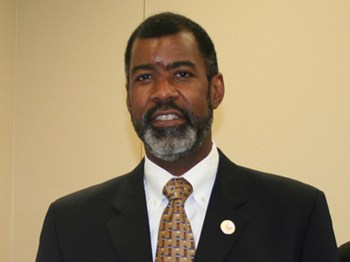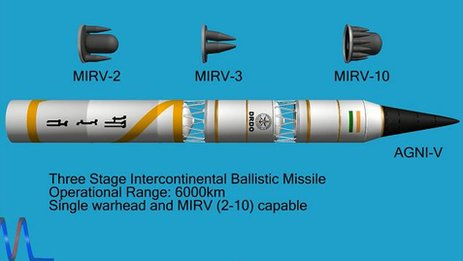
Blog
-
Geiger Readings for June 19, 2014
Ambient office = 74 nanosieverts per hourAmbient outside = 84 nanosieverts per hourSoil exposed to rain water = 86 nanosieverts per hourBosc pear from Top Foods = 91 nanosieverts per hourTap water = 77 nanosieverts per hourFiltered water = 70 nanosieverts per hour -
Nuclear Reactors 134 – NRC Commissioner Asked to Resign Due to Conflict of Interest
I have blogged in past posts about regulatory capture which is basically the take-over of a government agency by the industry that it is supposed to regulate. This can result in industry involvement writing the rules for regulation or failure of the agency to enforce regulations on industry. There is also the problem of a revolving door where people move back and forth between positions in the regulatory agency and positions in industry. Conflict of interest is a constant problem which may include the same person having both regulatory authority and also promoting the interests of a regulated industry. The standard way of dealing with such a situation is to have the person recuse themselves from the regulatory decision making process when it might be influenced by their private agenda.
The Nuclear Regulatory Commission has often been accused of regulatory capture with good reason. The U.S. nuclear industry has been given far too much latitude with respect to following NRC regulations. Now a group of thirty four non-profit organizations including Friends of the Earth, Physicians for Social Responsibility and the Sierra Club have drafted a letter demanding that one of the NRC Commissioners be forced to resign immediately due to a conflict of interest.
Commissioner William D. Magwood recently applied for and was given a job with the international Organization for Economic Co-Operation and Development’s Nuclear Energy Agency (NEA). The NEA is dedicated to promoting the use of nuclear power and the economic interests of member governments. The concern of the group of non-profits is that Magwood continued to participate in making decisions on regulations for the nuclear industry while he was applying and being hired for the NEA job. They say that he should have recused himself from helping to make decisions which would impact the implementation of nuclear power being promoted by the NEA.
In part, the letter said that Magwood’s seeking and obtaining a nuclear promotion job while sitting on the NRC is “antithetical to the basic principles of the Energy Reorganization Act of 1974 that safety, not economics, must be the NRC’s paramount consideration and that promotional policies shall be left to the U.S. Department of Energy (DOE).”
The letter pointed out that allowing Magwood to retain his seat on the NRC would be a violation of federal laws that deal with the impartiality of judges. “Commissioner Magwood should resign because a reasonable person would question his independence and objectivity in applying NRC safety requirements or judging the significance of safety issues. Mr. Magwood has a conflict of interest whenever he is forced to consider a solution to a safety issue that could significantly increase the cost of nuclear power production and thus limit its viability in the marketplace.”
In addition, the non-profit group wants Magwood to retroactively recuse himself from decisions that he participated during the nine months between his application for the NEA job and his hiring for the job. During that time, the NRC was reviewing and voting on two nuclear safety related projects. The NRC was considering funding research into the adequacy of their safety regulations and research into supporting the movement of spent fuel rods from cooling pools to dry cask storage. Both of these proposals were voted down with Magwood casting negative votes. If these projects had been funded, the cost of construction and operation of nuclear power plants in the United States would have increased. This would have been in direct opposition to the stated goals of the NEA. A reasonable person would have to conclude that Magwood could have voted as he did to improve his chances of getting the NEA job.
NRC Commissioner William D. Magwood:
-
Radiation News Roundup June 18, 2014
-
Geiger Readings for June 18, 2014
Ambient office = 106 nanosieverts per hourAmbient outside = 103 nanosieverts per hourSoil exposed to rain water = 98 nanosieverts per hourBartlett pear from Top Foods = 123 nanosieverts per hourTap water =109 nanosieverts per hourFiltered water =97 nanosieverts per hour -
Nuclear Weapons 82 – New Annual Survey of Nuclear Weapons
The Stockholm International Peace Research Institute (SIPRI) recently released its annual survey of nuclear weapons. The United States with seven thousand three hundred warheads and Russia with eight thousand warheads have been dismantling their huge arsenals left over from the Cold War. The other signatories of the international nuclear arms treaties are China with two hundred and fifty warheads, France with three hundred warheads and the United Kingdom with two hundred and twenty five warheads. There are four other nuclear armed nations that have not signed the nuclear non-proliferation treaties. Israel has about eighty warhead, Pakistan has one between one hundred and one hundred and twenty warheads and India has ninety to one hundred and ten warheads. North Korea is thought to have a few small nuclear warheads but lacks sophisticated and powerful delivery systems. All in all, there are about sixteen thousand nuclear warheads in the world with four thousand that are operational and ready to launch.
The survey points out that although signatories of the nuclear non-proliferation treaties have been paying lip services to eventually getting rid of all nuclear weapons, they have all announced intentions to deploy new delivery systems and upgrade their warheads. It is obvious that these nations consider nuclear weapons to be an important part of their strategic arsenal and intend to deploy and maintain them.
The United States is planning on spending over three hundred and fifty billion in the next decade on its nuclear arsenal including a replacement for the current fleet of Trident submarines. Russia is constructing a new class of nuclear missile submarines and replacing the Soviet intercontinental ballistic missiles with mobile versions of the SS-27 missile. China is increasing spending on its ballistic missile program and constructing more warheads.
India is more concerned with its current delivery systems. India does not have any submarines armed with nuclear missiles. It also lacks intercontinental ballistic missiles. India has declared a no-first use nuclear policy. If India is threatened with a nuclear attack from China or Pakistan, it feels that it must have nuclear missile submarines and ICBMs in order to deter attack or retaliate effectively. India has developed and tested an ICBM but it will be years before it can be deployed. They are also working on their first nuclear powered submarine which will be able to carry and launch nuclear missiles.
Pakistan is working on increasing its production of fissile materials so it can construct more warheads. They also have no submarines with nuclear missiles or intercontinental ballistic missiles but, since they do not have to contend with a threat from China, they do not feel the pressure to develop them that India feels.
As I have pointed out before, there are estimates that the detonation of as few as one hundred nuclear warheads could cause a nuclear winter. It is absolutely critical that nuclear armed nations understand that any significant launch of nuclear warheads for any reason from any country could be the end of human civilization. A weapon that destroys the user is useless for defense or retaliation.
India’s first ICBM – the Agni V:
-
Radiation News Roundup June 17, 2014
-
Geiger Readings for June 17, 2014
Ambient office = 114 nanosieverts per hourAmbient outside = 114 nanosieverts per hourSoil exposed to rain water = 99 nanosieverts per hourRedleaf lettuce from Top Foods = 60 nanosieverts per hourTap water = 124 nanosieverts per hourFiltered water = 106 nanosieverts per hour -
Nuclear Reactors 133 – Researchers Seek Better Cladding for Nuclear Fuel Rods
Following the nuclear disaster at Fukushima in March of 2011, the U.S. government increased allocation of funding for research into the development of stronger protective coating for nuclear fuel rods. Prior to the disaster, about two million dollars were being spent per year on improving the construction of nuclear fuel rods. Following the disaster, the funding rose to over thirty million a year.
The goal of the new funding is to promote the creation of nuclear fuel rods that are more difficult to damage and melt in extreme conditions. In addition, the protective coating on the nuclear fuel rods must be reformulated to reduce the danger of chemical reactions that make current fuel rods brittle and generate explosive hydrogen gas. The hope is that new fuel rod designs could give plant operators more time to respond to an emergency before explosions or a catastrophic meltdown occur.
Nuclear fuel has not changed significantly for decades. Naturally occurring uranium is mostly U-238 with less than one percent of U-235. Low enriched uranium for current U.S. reactors has had the percent of U-235 boosted to five percent by isotopic separation. Uranium dioxide powder from the fuel fabrication process is compressed into thimble sized pellets. The pellets are inserted into metal tubes up to fifteen feet long. The tubes are composed of a zirconium alloy that resists corrosion in the reactor. They are able to withstand the heat being generated and they separate the fuel pellets from the circulating coolant in the reactor. However, if the cooling systems fail and water level drops to expose the fuel rods to air, the zirconium cladding reacts with the steam to produce hydrogen gas. The reaction that produces hydrogen also produces heat, increasing the loss of coolant.
The Electric Power Research Institute is working on a type of cladding made of molybdenum which can resist higher temperatures that zirconium. The University of Tennessee are coating zirconium cladding with ceramics to increase heat resistance. The Westinghouse Electric Company is working on creating cladding out of silicon carbide. At the University of Illinois, they are attempting to create a new coating that could be applied to standard zirconium fuel rods to prevent hydrogen generation and heat damage. They are also trying to create chemicals that they can add to fuel rods that would migrate out of the rod and form a protective coating if the temperature rises.
Of course, any new approach to fuel rod construction must be economically feasible. Some researchers are hoping to offset the increased cost of new fuel rod design by extending the lifespan of the new fuel rods. Any new fuel rod design will have to be thoroughly tested before implementation. Even with thorough testing, we won’t really know if the new designs are better than current fuel until another nuclear disaster occurs and it might take years of operation before any design problems surface. In any case, it will probably require new regulatory action by the Nuclear Regulatory Commission to insure that all U.S. reactors adopt any new fuel rod design.
Nuclear fuel assembly:
-
Radiation News Roundup June 16, 2014
Japan budgeted 22 billion yen to increase food export which is 14 times much as budgeted in 2012. fukushima-diary.com
Some 39 months after the multiple explosions at Fukushima, thyroid cancer rates among nearby children have skyrocketed to more than forty times normal. commondreams.org
Three companies have teamed up to develop techniques for freezing radioactive liquids and sludges to aid their handling and clean-up. world-nuclear-news.org
-
Geiger Readings for June 16, 2014
Ambient office = 114 nanosieverts per hourAmbient outside = 108 nanosieverts per hourSoil exposed to rain water = 99 nanosieverts per hourRedleaf lettuce from Top Foods = 116 nanosieverts per hourTap water = 92 nanosieverts per hourFiltered water = 69 nanosieverts per hour






